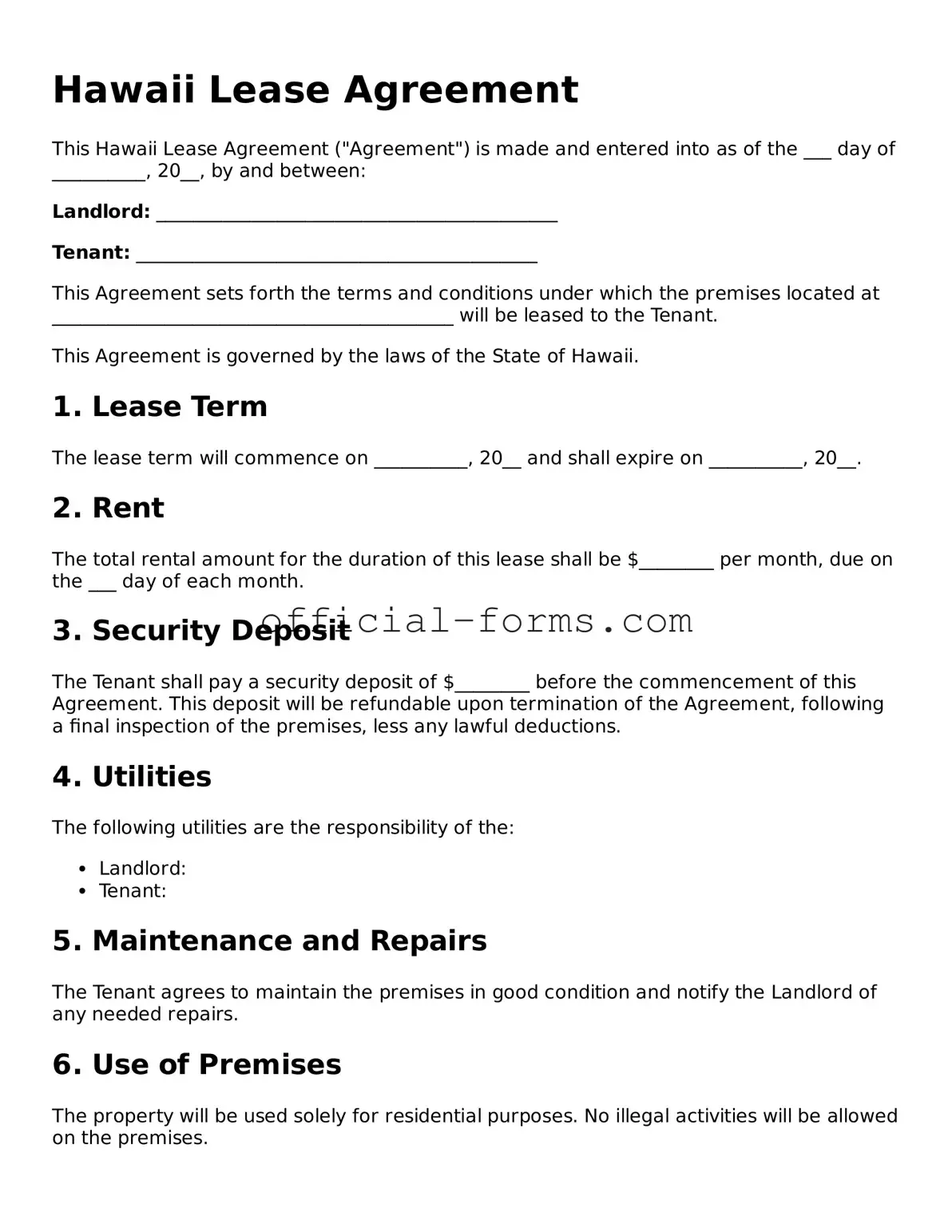Filling out a Hawaii Lease Agreement form can be straightforward, but many people make common mistakes that can lead to issues down the line. One frequent error is failing to include all required information. Landlords and tenants must provide their full names, addresses, and contact information. Omitting any of these details can cause delays or misunderstandings.
Another common mistake is not reading the entire agreement carefully. Many individuals skip sections or gloss over important terms. Each part of the lease is significant, and overlooking clauses related to security deposits, maintenance responsibilities, or lease termination can result in confusion later.
People often misinterpret the lease duration. Some tenants assume that a lease automatically renews unless they give notice. However, this is not always the case. It's crucial to understand the specific terms regarding lease length and renewal options to avoid unexpected consequences.
Many individuals also forget to clarify the payment details. Rent due dates, acceptable payment methods, and any late fees should be clearly stated. Failure to address these points can lead to disputes and financial strain.
Another mistake is neglecting to document the condition of the property before moving in. Tenants should take photos and note any existing damages. Without this documentation, disputes about security deposits can arise when it’s time to move out.
Some individuals do not seek clarification on ambiguous terms. If a section of the lease is unclear, asking for clarification is essential. Ignoring confusing language can lead to misunderstandings about responsibilities and rights.
Finally, not keeping a copy of the signed lease is a significant oversight. Both parties should retain a copy for their records. This ensures that everyone has access to the same information and can refer back to it if necessary.
